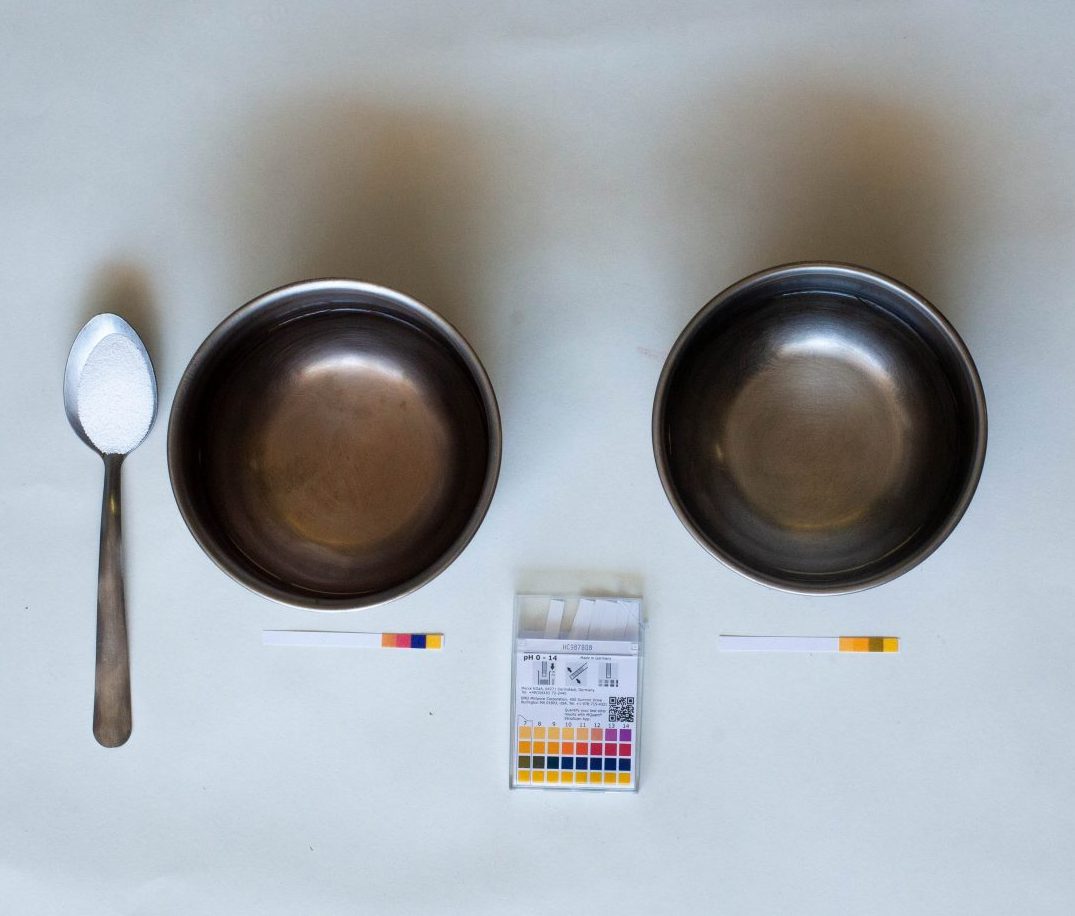For natural dye baths
Light colored dye baths are relatively simple. Quickly dip the pH strip so all 4 boxes are immersed in the liquid and read the pH results.
Dark or very highly colored dye baths like a strong cochineal bath, or an iron-rich bath will discolor the pH strip, making it difficult to read. In this case, dip only the very tip of the strip into the vat. Since these baths are often acidic, pay special attention to the very first square. This is the one that indicates an acidic solution and a lower pH. That square will become pinker as the ph goes lower.
For indigo vats
A common question I get about checking indigo or highly colored dye baths is: how can you possibly check pH when the indigo vat is dark blue and immediately stains the pH paper so it’s unreadable?
The trick is to have the vat surface very still. Dip only the very tip of the strip into the vat, not the entire strip. The bottom square will be discolored by the blue pigment in the vat, but hold the strip steady in the liquid. Don’t dunk it. And watch the liquid from the vat travel up the connected squares. Soon, you will see the third square from the bottom change from yellow to orange. It might change nearly to red in the alkaline liquid. Reading the legend, you will see that if the third square from the bottom is orange red, the pH is about 10. The redder that square gets, the higher the pH. Sometimes the very top square will also change color. If it starts moving to a violet shade, then your pH is very high and possibly too high for indigo dipping. To lower the pH, add a mild acid such as acetic acid (white vinegar).

